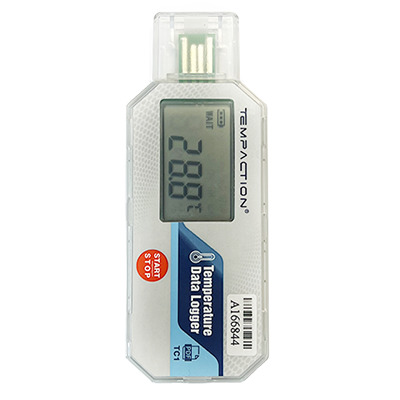Blog
Site Editor
 Site
https://aks-shockaction.usa72.wondercdn.com/uploads/image/62591c673106a.png
Transporting high-value goods comes with significant risks. Whether it’s precision instruments, medical equipment, or luxury items, improper handling and environmental fluctuations can lead to damage, resulting in financial losses and supply chain disruptions.
Site
https://aks-shockaction.usa72.wondercdn.com/uploads/image/62591c673106a.png
Transporting high-value goods comes with significant risks. Whether it’s precision instruments, medical equipment, or luxury items, improper handling and environmental fluctuations can lead to damage, resulting in financial losses and supply chain disruptions.
Reducing Cargo Damage with Transport Monitoring Devices
Views: 730
Author: Site Editor
Publish Time: 2025-03-25
Origin: Site
Introduction
Transporting high-value goods comes with significant risks. Whether it’s precision instruments, medical equipment, or luxury items, improper handling and environmental fluctuations can lead to damage, resulting in financial losses and supply chain disruptions. Businesses need reliable solutions to minimize these risks and ensure goods arrive in perfect condition.
Transport monitoring devices play a crucial role in safeguarding cargo by providing real-time data on impact, tilt, temperature, humidity, and unauthorized access. By implementing these devices, companies can gain better visibility into their supply chain and take proactive measures to prevent damage.
Common Causes of Damage to High-Value Goods
Before exploring solutions, it’s essential to understand the main factors contributing to cargo damage:
-
Impact and Shock: Rough handling, sudden drops, and transportation vibrations can damage fragile goods.
-
Tilt and Orientation Issues: Incorrect positioning during loading or transit may lead to malfunctions in sensitive equipment.
-
Temperature and Humidity Fluctuations: Extreme environmental conditions can affect products such as pharmaceuticals and electronics.
-
Unauthorized Access or Tampering: Theft or improper handling during transit can compromise security and integrity.
By identifying these risks, businesses can implement targeted solutions to protect their shipments.

Types of Transport Monitoring Devices and Their Functions
To address these challenges, companies can use various transport monitoring devices that provide real-time insights:
-
Impact and Shock Indicators: These sensors detect excessive force, helping identify rough handling or potential damage points.
-
Tilt Sensors: Designed for delicate goods, these devices alert when cargo is improperly positioned.
-
Temperature and Humidity Loggers: Essential for climate-sensitive shipments, they ensure products remain within safe storage conditions.
-
GPS Trackers with Security Alerts: Real-time location tracking helps prevent unauthorized access and loss.
These devices enable businesses to monitor cargo conditions throughout the entire logistics process, improving accountability and reducing damage risks.
How Transport Monitoring Devices Help Reduce Damage
Integrating transport monitoring solutions offers several advantages:
-
Real-time Alerts and Quick Responses: Immediate notifications allow logistics teams to take corrective action before damage occurs.
-
Data-Driven Decision-Making: Collected data helps identify weak points in the supply chain, leading to process improvements.
-
Improved Accountability: Tracking ensures that carriers handle goods properly, reducing disputes and liability issues.
-
Preventive Measures: Historical data enables companies to optimize packaging and handling strategies, reducing future risks.
By using transport monitoring devices, businesses can move from reactive problem-solving to proactive risk management.
Best Practices for Implementing Transport Monitoring Solutions
To maximize the benefits of transport monitoring devices, companies should follow these best practices:
-
Select the Right Devices: Choose monitoring tools based on cargo type and risk factors.
-
Strategic Placement: Install sensors in key locations to ensure accurate data collection.
-
Integrate with Logistics Systems: Sync monitoring data with supply chain management platforms for seamless tracking.
-
Train Staff and Logistics Partners: Ensure all stakeholders understand how to interpret and act on monitoring data.
A well-executed monitoring strategy enhances supply chain efficiency while protecting high-value goods.
Case Studies: Successful Implementation in High-Value Cargo Protection
Several industries have successfully used transport monitoring devices to safeguard shipments:
-
Electronics and Precision Equipment: Manufacturers use shock and tilt sensors to detect improper handling during international shipping.
-
Pharmaceuticals and Medical Devices: Temperature loggers help ensure vaccines and medical equipment remain within required storage conditions.
-
Luxury Goods and Artwork: GPS tracking and tamper alerts prevent theft and unauthorized access during transit.
These real-world applications highlight the effectiveness of transport monitoring solutions in protecting valuable shipments.

Future Trends in Transport Monitoring Technology
As technology evolves, transport monitoring solutions are becoming more sophisticated. Key trends shaping the industry include:
-
AI and Predictive Analytics: Advanced algorithms analyze past shipping data to predict and prevent potential damage risks.
-
Blockchain for Enhanced Transparency: Secure, tamper-proof tracking systems provide verifiable shipment records.
-
IoT-Enabled Smart Packaging: Real-time data collection and automation improve monitoring accuracy and efficiency.
By adopting these innovations, businesses can further enhance cargo protection and supply chain resilience.
Conclusion
Minimizing damage to high-value goods during transport requires a proactive approach. Transport monitoring devices provide real-time insights, helping companies identify risks, improve handling processes, and enhance supply chain transparency.
Investing in these solutions not only protects valuable shipments but also reduces costs, strengthens customer trust, and improves overall logistics efficiency.
Looking for reliable transport monitoring solutions?
Explore our advanced impact, tilt, and temperature monitoring devices to safeguard your high-value shipments. Contact us today to learn more!

